Top 5 Most Successful American EntrepreneursWhat is the meaning of entrepreneur?An entrepreneur is someone who launches a new company, bearing the most of the risks and earning the most of the benefits, and the practice of starting a business is referred to as entrepreneurship. The entrepreneur is typically seen as an inventor who develops new ideas for products, services, businesses, and operational procedures. Due to their ability to anticipate needs and successfully promote novel ideas, entrepreneurs are vital to any economy. Entrepreneurs who are successful in handling the risks associated with starting a business are rewarded with the potential for future wealth, appreciation, and growth. In contrast, entrepreneurial failure results in losses and a diminished market presence for those involved. Top 5 Most Successful American EntrepreneursMany entrepreneurs all around the world have succeeded in building the greatest businesses, creating techniques to optimize the work/tasks, and building the brand with their effective marketing and excellent products as well. This article mentions the top 5 most successful American entrepreneurs who created successful businesses, made fortunes, and are most renowned for their works. They are: Andrew Carnegie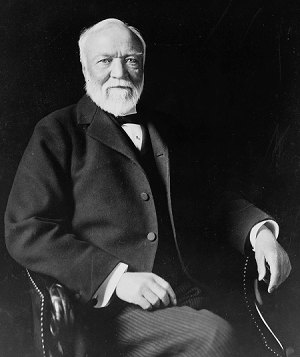
Industrialist and philanthropist Andrew Carnegie amassed wealth by starting from scratch. On November 25, 1835, Andrew Carnegie was born in Dunfermline, Scotland. His parents worked in the textile and apparel industries. The family, who were never wealthy, watched their little revenue disappear when the development of power looms revolutionized the business. The family relocated to the U.S. when Carnegie was 12 years old in quest of better chances. Before taking a position as a telegraph messenger, Carnegie worked at a cotton factory in Pennsylvania. Carnegie managed to read and taught himself how to translate telegraph signals by ear, making up for his lack of formal education through self-study. His skills helped him achieve clerk and telegraph operator positions in the Telegraph Office at the age of 17. As a result of his charm and sharp intelligence, Carnegie rose swiftly through the ranks of the railroad and eventually found himself working as Thomas A. Scott's secretary. He received important managerial and investment insights from Scott's guidance. Carnegie started making investments in railroad firms and the sectors that aided them, and by 1863, he was earning thousands of dollars in dividends annually. Carnegie succeeded Scott as railroad superintendent after he quit the company to establish the Keystone Bridge Co. Later, Carnegie joined his mentor at Keystone in 1865 and contributed to shaping the prosperous business. Carnegie acquired a controlling stake in several different companies through his partnerships and investments. He had a stake in Keystone, several ironworks that supplied Keystone, sleeping cars used in the railroad, an oil company, and a steel-rolling plant. Carnegie consolidated his holdings through vertical integration because he believed that iron would serve as the foundation for connecting all of his businesses. Carnegie purchased his main rival, named Homestead Works, and a majority stake in Henry Frick's coke business. Frick held a significant amount of coke, which was necessary for steel production. Carnegie and Frick were extremely different individuals-Carnegie was charming and cheerful while Frick was tough and reserved-but Carnegie recognized Frick's potential to take over the management of his large business. Carnegie merged his businesses into the single Carnegie Steel Co. in 1892, electing Frick as its chairman. During one of his travels to offer bonds to investors in order to obtain money, Carnegie observed that the steel demand was rising and might perhaps outstrip that of iron. In 1873, he modified his approach and started concentrating on his steel interests. Constructing new mills with cutting-edge innovations that would outperform the competition was the main goal for Carnegie and his partners. He was in the strongest position to purchase when the economy experienced a six-year downturn in 1873 because his mills were more productive than the competition. He purchased businesses and mills from rival industries that produced at different levels. When the economy improved, he brought the old mills up to date and was once again outperforming his competitors by producing enough and earning. In 1901, Andrew Carnegie sold his steel business to J.P. Morgan for $480 million. Carnegie had one of the greatest personal fortunes when he started his philanthropic career. In today's currencies, Carnegie donated the equivalent of billions of dollars between 1901 and 1919, the year he passed away. He sponsored more than 2,500 public libraries in the United States and overseas, all of which have the Carnegie name. Perhaps, this was done because he faced problems accessing books as a youth. He also provided funding for many trusts, foundations, and universities. Henry Ford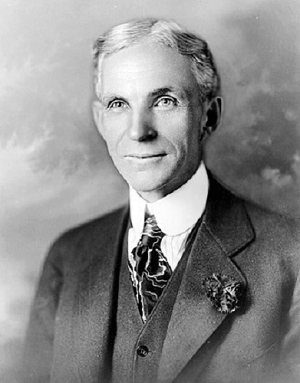
Henry Ford was an American business entrepreneur and inventor who founded the Ford Motor Company. He created a number of vehicles, most notably the Model T car, and completely altered the auto industry by bringing the moving assembly line to the process of building cars. His technological advancements had such a profound effect on the economy that the name "Fordism" was coined to describe the mass consumption and production they made possible. Henry Ford was born on July 30, 1983, in Detroit, as the eldest of six children, and his father was an Irish immigrant who moved to Wayne County in 1847. Since he was a young child, he has had a keen interest in mechanics and machines, spending a lot of time in a machine shop he built. He had constructed a steam engine by the time he was fifteen. In 1879, he served as an apprentice in Detroit before going to work repairing steam engines in southern Michigan. After operating a small lumber company for a period and selling lumber from his father's property, he, by 1891, had an engineer position at Thomas Edison's Detroit-based Edison Illuminating Company. He was chosen to serve as their chief engineer in November 1893. Henry Ford married Clara Jane Bryant in 1888, and Edsel Bryant Ford was the couple's first and only child, born in 1893. Ford built his first internal combustion engine in 1893, with a cylinder fueled by gasoline, and the automobile, which he completed in 1896 and was later powered by the engine. A kind of horseless carriage, the quadricycle had four bicycle wheels and a four-horsepower engine and could only move forward, not reverse. Ford joined the Detroit Automobile Company as one of its founding members in 1899 after leaving the Edison Illuminating Company, but he departed the corporation after just a year since the business failed, around 18 months after its establishment. Ford established the Henry Ford Company in 1901, which later changed its name to the Cadillac Motor Car Company, then left again after a year. Ford had been developing several racing vehicles in the meanwhile, and they proved to be successful in terms of winning the race and even establishing speed records. The Ford Motor Company was established in June 1903; it sold its first automobile in July, made a profit in its debut year, and later expanded overseas. When the renowned Model T was first released in 1908, about 15 million vehicles had been sold, breaking previous records for auto sales. The Model T had a significant appeal to the general public because it was reliable, affordable, and simple to maintain. The moving assembly line technique of manufacturing, which was introduced to the Model T factory in 1913, transformed the automobile industry and manufacturing as a whole. Even though the Model T could be produced on a moving assembly line in about 90 minutes, the workers resisted. Due to the new production method that requires workers to complete their tasks before the vehicle can proceed further down the assembly line, work has become monotonous and repetitive while also being closely timed. As a result, many employees departed to work for rival companies. Ford created the "$5 Day" in 1914 as a result of its high turnover, and $5 was twice what a factory worker would expect to make in a day at the time. Ford also shortened the shift to 8 hours, down from the previous norm by an hour. Though benefiting the workforce, Ford was also able to operate three shifts each day, greatly increasing the effectiveness of the factory's operations. Henry Ford implemented a five-day workweek in 1926, closing his facilities on Saturdays and Sundays. Following the initial upheaval, these improvements proved to be extremely competitive in the modern labour market, ultimately giving the business a considerable hiring edge and also enhancing employee retention and the quality of life (in part by making Ford's automobiles affordable to its own workers and providing staff with more free time). In 1919, Henry Ford's son Edsel took over as head of the Ford Motor Company. He bought out his investors the day he was succeeded as the company's president, and he continued to be one of the firm's sole owners alongside his wife, Clara, and son, Edsel. But after his son passed away in 1943, Henry Ford again became the firm's president till his grandchild, Henry Ford II, took control in 1945. Sam Walton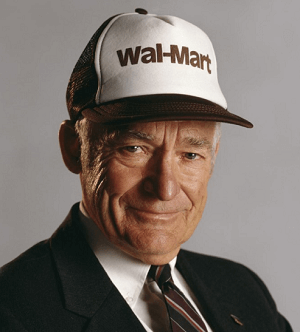
Sam Walton, an American businessman, and entrepreneur who lived from March 29, 1918, to April 5, 1992, is the most famous person known for founding Walmart and Sam's Club. Wal-Mart Stores Inc. expanded to become the largest private employer and the largest firm in the world by revenue. Until 1923, Sam resided with his parents on the family farm. Farming, however, didn't generate sufficient money to support the family, so Thomas Walton turned to farm mortgaging. He worked as a child during the Great Depression to assist his family in meeting their financial needs, as was typical at the time. He milked the family cow, packaged the extra milk, and delivered it to clients. Following that, he also delivered newspapers on a paper route and sold magazine subscriptions. Walton decided to go to college after finishing high school to find a better method to support his family, and he did odd tasks during college, such as waiting tables in exchange for food. Three days after receiving his undergraduate degree, Walton started working for J. C. Penney as a management trainee, and his monthly salary for this job was $75. Walton worked for J. C. Penney for around 18 months. He left his position in 1942 because he planned to enlist in the military and serve in World War II. He enlisted in the military in 1942. Walton took over the administration of his initial variety store in 1945 at 26 after leaving the service. Walton bought a Ben Franklin variety store in Newport, using a $20,000 loan from his father-in-law and $5,000 he had earned from his service in the military: the shop was a Franchise of Butler Brothers Chain. Walton invented several ideas that were essential to his success. Walton believed customers would shop at home if he gave pricing comparable to or better than those of stores located in four-hour drive-away cities. Walton made sure a variety of products were always available on the shelves. His second business was close to his initial Ben Franklin and next to Newport's major competitor. The landlord, whose family had a history in retail, became interested in Walton's approach when the sales volume increased from $80,000 to $225,000 in 3 years. He declined to extend the lease because he admired Sam's outstanding success and wanted to give his son the business (as well as the franchise rights). The absence of a renewal option and the excessively high rent of 5% of sales taught Walton his earliest business lessons. Despite ejecting Walton, Holmes paid $50,000 for the stock and furnishings of the shop, which Walton referred to as "a reasonable deal". With a year left on his lease but the store effectively sold, he, his wife Helen, and his father-in-law were able to negotiate the acquisition of a new location on Bentonville's downtown square. He just had enough money from the sale of the initial store left over to complete the deal and pay Helen's father back. On May 9, 1950, they held a one-day remodelling sale to start their operations. Before he acquired the Bentonville store, its annual sales were $72,000; they rose to $105,000 during the first year, then to $140,000, and then to $175,000. The cash-strapped young Walton had to learn how to divide duties when the new "Five and Dime" in Bentonville opened for operation while Newport, 220 miles distant, still had one year left on its lease. Walton became enthused about scoping for more possibilities and launching more franchises after finding success with two stores located at such a distance. He and his brother Bud launched a store in a Kansas City retail complex in 1954, and Sam opened numerous more variety stores with the assistance of his brother and father-in-law. He urged his managers to make investments and purchase shares in the company, usually as much as $1,000 in the store or the upcoming outlet. He and his brother Bud operated around 16 stores-15 Ben Franklin's and one independent-in Arkansas, Missouri, and Kansas by 1962. Sam Walton is one of the most successful project entrepreneurs in the retail chain business. He was passionate about learning. He routinely paid surprise visits to Walmart locations across the nation to find out what local ideas were successful so they could be spread to other Walmart locations. On July 2, 1962, a real Walmart opened its doors in Arkansas. It was at 719 West Walnut Street and was known as the Wal-Mart Discount City store. He made a concentrated effort to advertise American-produced goods. Finding American producers who could supply goods for the entire Walmart chain at prices low enough to compete with overseas suppliers was part of the strategy. Walton became interested in the Meijer chain of stores as it expanded. He eventually realized that Meijer's original, ground-breaking idea was the foundation of his one-stop-shopping mall approach. Walton placed his stores in small towns rather than bigger cities, which is not typical of American discount retailer chains, and at the time, opening stores in small towns was the only way to be close to customers. Walton's model had two benefits. First, there wasn't much competition already. Second, additional retailers would be deterred from entering a marketplace if an existing store was big enough to dominate sales in a town and its environs. He placed a strong emphasis on logistics in order to make his model work, especially the placement of stores within one day's drive of Walmart's local warehouse and distribution via its own trucking service. Sales of well-name-brand products at a discount were made possible through volume purchasing and swift delivery. This led to consistent development, from 190 outlets in 1977 to 800 in 1985. Walmart is known to have a huge impact on each area in which it opens a store due to its scale & economic influence. Steve Jobs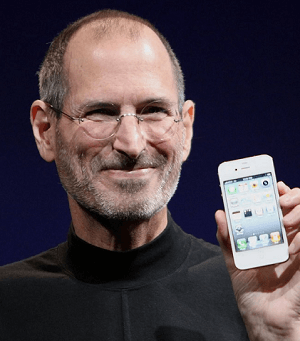
Steven Paul Jobs was an American businessman, investor, product designer, and entrepreneur. Jobs was brought up by adoptive parents in Cupertino, California, which is a part of the area now referred to as Silicon Valley. Even as a young man, he had a variety of interests in addition to engineering. He dropped out of college, and in early 1974, he accepted a position as a video game designer at Atari Corporation and used his savings to fund a trip to India. In the fall of 1974, Jobs returned to Silicon Valley and met with Stephen Wozniak, a longtime high school friend who'd been working for the Hewlett-Packard Company. Jobs recommended that they start a firm together after Wozniak informed him of his progress on creating his own computer logic board. They did so after Hewlett-Packard formally rejected Wozniak's idea in 1976. The logic board for the Apple I was constructed in the Jobs garage using funds from the sales of Wozniak's programmable calculator and Jobs' Volkswagen minibus. Jobs was one of the first entrepreneurs to recognize that the personal computer might appeal to a wide population. Jobs encouraged Wozniak to create a better model, the Apple II, equipped with a keyboard, and together they worked to get a stylish, moulded plastic case made to protect the gadget. Although having long, unruly hair and shunned work attire, Jobs was able to get funding, distribution, and publicity for the business. Apple Computer was formed in 1977, the same year the Apple II was finished, and the device was an instant hit and came to represent the growth in personal computers. In 1981, the corporation had a record-breaking public stock offering. In 1983, it entered the 'Fortune 500 of America's Top Companies', the fastest at that time. In 1983, the firm employed John Sculley, president of PepsiCo, Inc., to serve as its CEO. Jobs was in charge of the most significant project in the firm's history at the time. He took a small team of Apple engineers to the Xerox Corporation's Palo Alto Research Center (PARC) in 1979 to view a technological demonstration to observe how the graphical user interface may make computers more user-friendly and productive. Soon after, Jobs left the technical team working on the Lisa business computer to head a smaller group producing a less expensive model. Both computers were redesigned to employ better and put into practice PARC concepts, but Jobs made it clear that he preferred the Mac or Macintosh, as the new device was afterwards known. Jobs introduced the Macintosh in January 1984 in a brilliantly staged demonstration that served as the highlight of an outstanding publicity campaign. However, the initial Macs were pricey, underpowered, and had limited software programs, all of which led to dismal sales. Apple continuously enhanced the device, making it the company's mainstay and the model for all ensuing user interfaces. However, tensions inside the business quickly arose as a result of Jobs' apparent failure to address the issue, and in 1985, Sculley persuaded Apple's board of directors to remove the well-known co-founder of the firm. Jobs swiftly founded another company, NeXT Inc., to create powerful workstation computers for the education industry and despite the NeXT computer being renowned for its technical design, less expensive models from rival companies like Sun Microsystems, Inc. overshadowed it. Early in the 1990s, Jobs centred the business around its ground-breaking software platform, NEXTSTEP. Meanwhile, in 1986, Jobs purchased a majority stake in Pixar. This computer animation company was originally established as a part of Lucasfilm Ltd., the Hollywood film director George Lucas's production company. Jobs transformed Pixar into a significant animation studio during the course of the following ten years, producing, among other things, the first full-length feature film that was entirely computer-animated in 1995. That year, Pixar's initial public stock offering made Jobs a billionaire for the first time. Later, the Disney Company finally purchased the company from him in 2006. Gilbert Amelio was appointed as Apple's new CEO in late 1996 when the company was suffering from severe financial losses and on the approach of bankruptcy. Amelio chose NEXTSTEP, buying Jobs' enterprise for over $400 million-and returning Jobs to Apple as a consultant-when she found that the company had failed to produce an adequate substitute for the ageing operating system (OS) of the Macintosh. In June 1997, Apple's prodigal co-founder was asked to take over as CEO after the board of directors became dissatisfied with Amelio's failure to improve the company's financial situation. Jobs promptly discarded Amelio's commitments to make Mac clones, streamlined the company's product portfolio, and formed an alliance with Apple's former rival, the Microsoft Corporation. He also created a successful advertising campaign that encouraged consumers to "think differently" and buy Macintoshes. The iMac, a single-piece, egg-shaped computer that provided high processing for a reasonable price and started the trend of high-fashion Computers, was presented by Steve Jobs in 1998. By the end of the year, the iMac became the best-selling device in personal computers in the nation, enabling Jobs to continue reporting profits for the once-declining company. The following year, Jobs achieved success once more with the attractive iBook, a laptop designed with students in mind, and other devices. Though Apple did not reclaim its former industry supremacy, Jobs saved his company and reinstated himself as a brilliant high-technology marketer & visionary in the process. Jobs began reimagining Apple for the twenty-first century in 2001. In that year, Apple released iTunes, a software application that allows users to play music and convert it to the compact MP3 digital format. Later that year, Apple started to sell the iPod, a small MP3 player that immediately dominated its market. In 2003, Apple started offering online MP3 downloads of popular music from major record labels. Apple's online iTunes Store sold over a billion tracks and videos by 2006. On January 9, 2007, Jobs formally modified the firm's name to Apple Inc. in acknowledgement of the expanding shift in the industry. With the release of the touch-screen iPhone, a smartphone with the ability to play MP3s and films and connect to the Internet, Jobs led the firm into the telecommunications industry in 2007. That same year, Apple unveiled the iPod Touch, a compact MP3 and gaming device with an iPhone-type touch screen and built-in Wi-Fi. The iTunes Store's ability to offer both Apple and third-party software helped the iPhone and iPod Touch quickly surpass previous portable gaming systems in terms of game availability. With the introduction of the iPod in 2001 and the subsequent releases of the iPhone and iPad over the following ten years, Jobs revived the ailing Apple and elevated it to the forefront of communications and technology. Bill Gates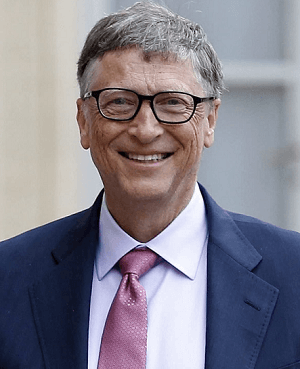
William Henry Gates III is an American business tycoon, software developer, entrepreneur, author, and philanthropist born on October 28, 1955. At age 13, Gates created his first piece of software. While still in high school, he co-founded a company that provided traffic-counting systems and worked with a group of programmers to computerize their school's payroll system. Paul G. Allen and Bill Gates worked together to create the first microcomputer software in 1975 when Gates was a sophomore at Harvard University. They started by modifying the well-known programming language BASIC (which is used on large computers) for usage on small computers, and after this endeavour was a success, Gates quit Harvard in his junior year and co-founded Microsoft with Allen. Gates' influence over the nascent microcomputer industry significantly rose when Microsoft licensed an operating system named MS-DOS to IBM Corporation-at the time the largest computer supplier and leading industry player-for use on its first microcomputer, the IBM PC. After the machine's launch in 1981, IBM quickly established the technical bar for the PC sector, and MS-DOS similarly overtook other operating systems. While Microsoft's independence led to contentious relationships with IBM, Gates masterfully leveraged the large organization to make it dependent on him indefinitely for the required software. Microsoft was also the preferred supplier of basic software for companies that created clones or IBM-compatible PCs. He had established himself as the PC industry's top player by the beginning of the 1990s. Gates earned a massive paper fortune as the firm's largest individual shareholder, mostly due to Microsoft's success. By the time he attained a net worth of tens of billions of dollars in just ten years after becoming a paper billionaire in 1986, he was reportedly the richest person in the world. Beginning in 1995 and 1996, Gates fervently refocused Microsoft on the creation of consumer and business software solutions for the Internet, creating the Windows CE operating system platform for networking non-computer devices like household televisions and personal digital assistants. He established the Microsoft Network to compete with America Online and other Internet service providers, and through which Gates's company, Corbis, acquired the enormous photo archives and other commercial photography assets. Gates was well-known for his philanthropic activity in addition to his position at Microsoft. In 1994, he established the William H. Gates Foundation with his then-wife, Melinda, to fund global health initiatives as well as other activities. In 1999, the foundation's name was changed to the Bill & Melinda Gates Foundation. He left his position as chairman in February 2014 but remained a board member, and in order to concentrate his personal efforts on the Bill & Melinda Gates Foundation, Gates resigned from the Microsoft board of directors in 2020. Microsoft is one of the world's biggest and most powerful tech firms, with a market capitalization value of over a trillion dollars.
Next TopicSpeculator
|
 For Videos Join Our Youtube Channel: Join Now
For Videos Join Our Youtube Channel: Join Now
Feedback
- Send your Feedback to [email protected]
Help Others, Please Share









